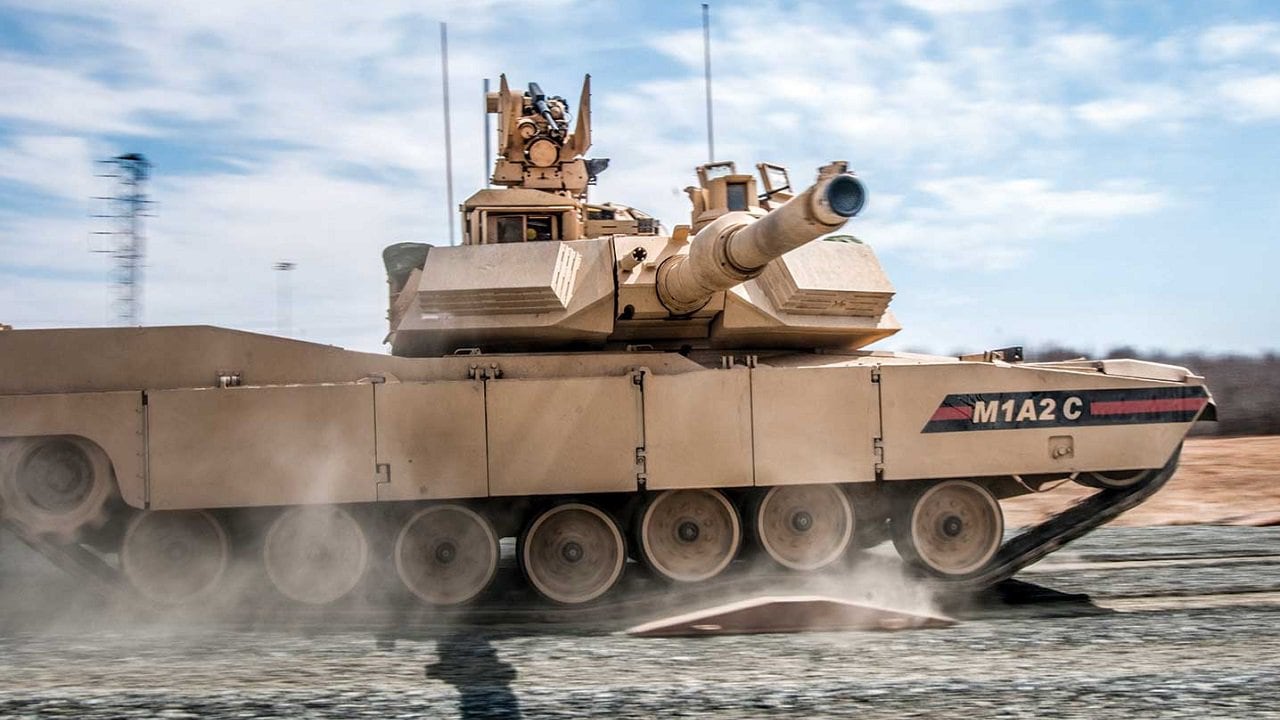The role main battle tanks (MBTs) continue to play in modern warfare has been emphasized by Russia’s ongoing invasion of Ukraine.
This month, the American-made M1 Abrams tank made headlines when the Defense Department announced the commencement of U.S.-led training of Ukrainian tank crews before the MBTs are sent to the frontlines of the war.
The U.S., along with other North Atlantic Treaty Organization (NATO) allies, pledged to deliver advanced armored vehicles to support Kyiv’s defensive efforts.
In addition to M1 Abrams, Challengers and Leopards are expected to arrive in Ukraine in the upcoming months.
The M1 Abrams series of tanks has remained a mainstay of the Army’s armored corps for over four decades.
Largely considered to be one of the most sophisticated MBTs across the globe, the Abrams has undergone several facelifts over its lifetime to maintain its edge over competitors.
While the newest Abrams tank iteration, the SepV4, will sport the most advancements when it enters service, its preceding SepV3 Abrams will remain a valuable battlefield contributor for years to come.
Meet the M1 Abrams
The M1 Abrams family of tanks was derived from the joint U.S.-German effort to develop replacement tanks for the M60 Patton and Leopard 1 in the 1960s.
In order to effectively combat the Soviet Union’s tank arsenal, including the T-62 MBT, a collaborative project aimed to create a singular design with several improvements to existing Western tanks.
The joint effort resulted in the MBT-70, which featured new powerful engines, a hydropneumatics suspension and other highly capable attributes.
However, due to budgetary constraints and design disagreements, the Department of Defense and Germany ended their partnership. Although the MBT-70 project was cancelled, the Army reallocated remaining funds in order to develop a new MBT under the XM815 project.
In the early 1970s, this program mapped out a list of necessary capabilities a new tank would be required to possess in order to thwart the Soviet’s armored vehicles.
By 1980, the first Abrams tank developed by Chrysler Defense (currently General Dynamics Land Systems) entered service, featuring license-built versions for the 105mm Royal Ordnance L7 gun.
Introducing the SEPV3
When the M1 Abrams first debuted, it sported a litany of cutting-edge and still-useful capabilities.
Perhaps the tanks’ most significant new feature was its Chobham composite armor, which protects the vehicle from being penetrated from very powerful projectiles.
To this day, the exact makeup of the Chobham armor that protects the Abrams series of MBTs remains top secret.
The current Abrams iteration sports additional enhancements. While this variant retains the layout of earlier iterations, the SepV3 possesses new technologies designed to preserve the tank’s combat relevance, functionality and prowess.
As detailed in a Warrior Maven piece, the SEPV3 sports a high-resolution display and a new electronic Line Replaceable Units.
Additionally, “This M1A2 SEP v3 effort also initiates the integration of upgraded ammunition data links and electronic warfare weapons such as the Counter Remote Controlled Improvised Explosive Device—Electronic Warfare—CREW.”
The SEPV3 tank is powered by a Honeywell AGT1500 gas turbine engine and hosts an auxiliary power unit that allows the MBT to operate on-board systems.
Protection wise, this Abrams variant also sports a CREW Duke V3 counter remote-controlled IED electronic warfare system that adds an extra layer of protection for crew members.
While the SEPv3 variant is expected to serve for years to come, the Army is already hard at work developing an upgraded next-generation version of the Abrams tank.
FROM 19FortyFive: The War in Ukraine Is About to Explode
FROM 19FortyFive: Does Putin Have Cancer?
Maya Carlin, a Senior Editor for 19FortyFive, is an analyst with the Center for Security Policy and a former Anna Sobol Levy Fellow at IDC Herzliya in Israel. She has by-lines in many publications, including The National Interest, Jerusalem Post, and Times of Israel. You can follow her on Twitter: @MayaCarlin.

